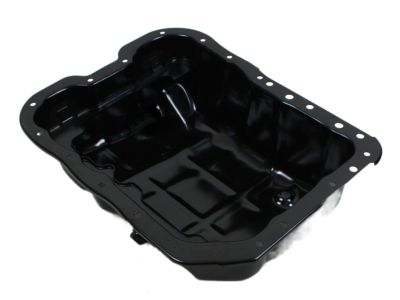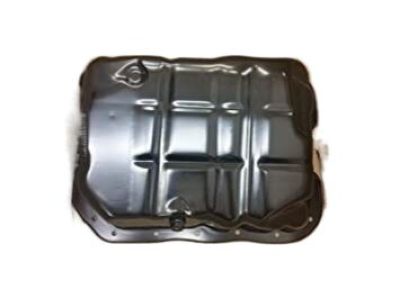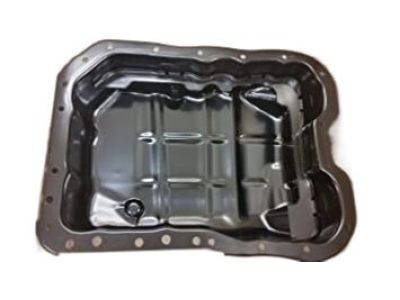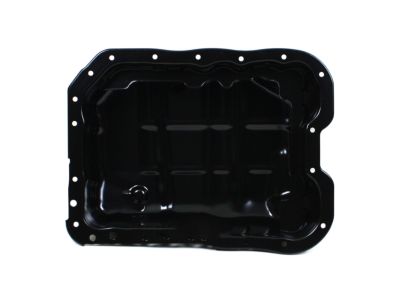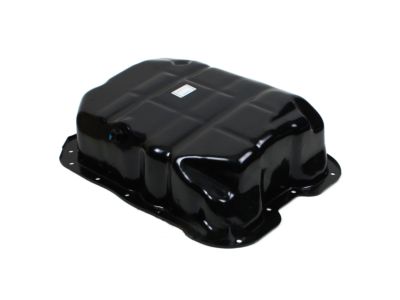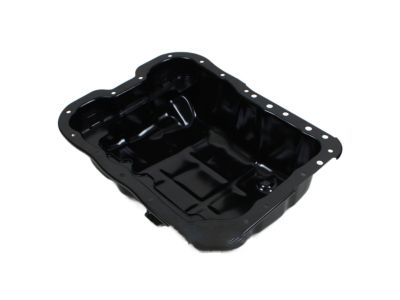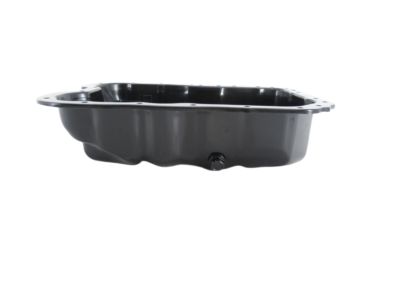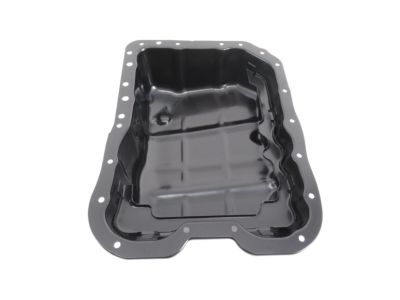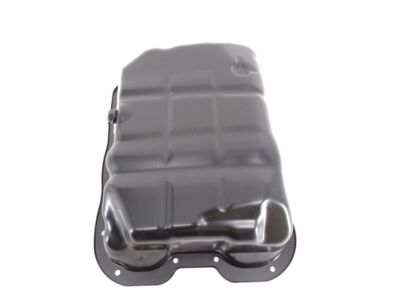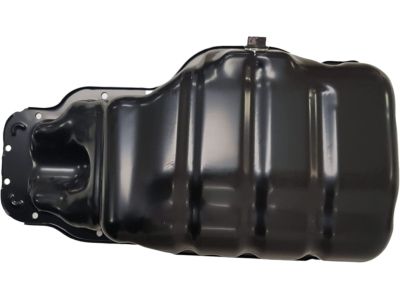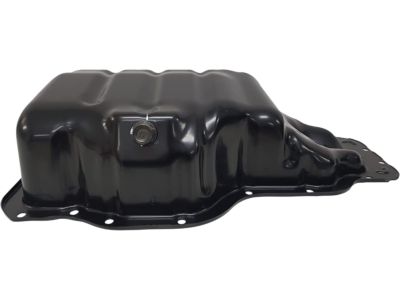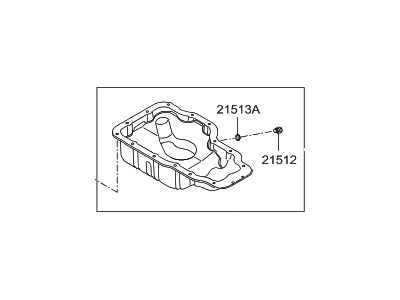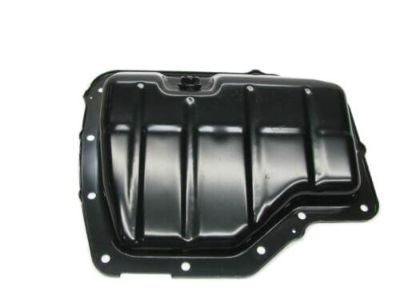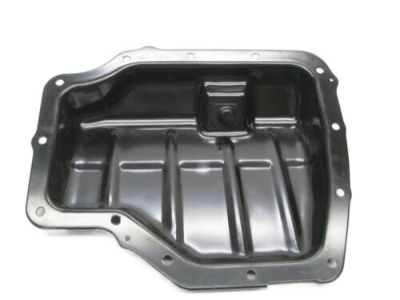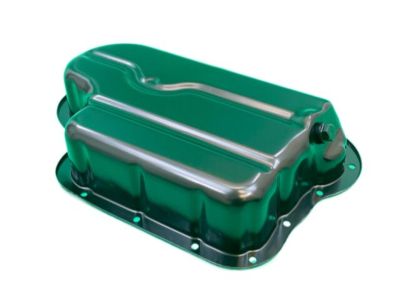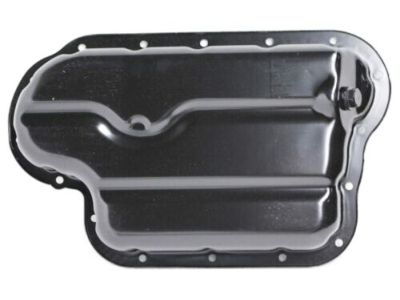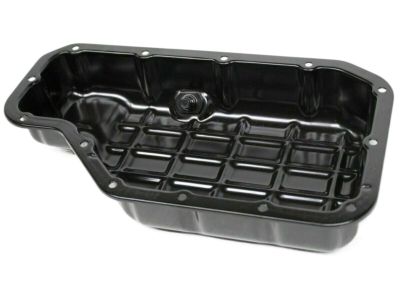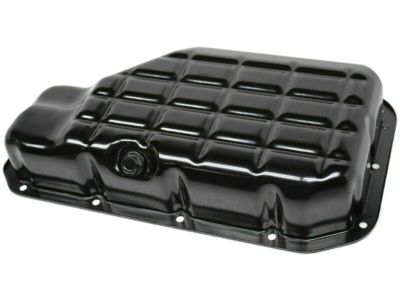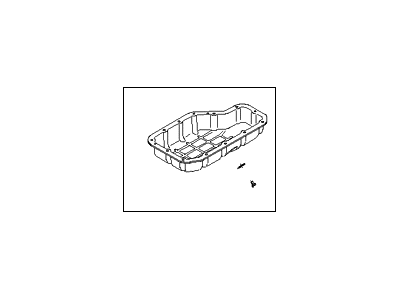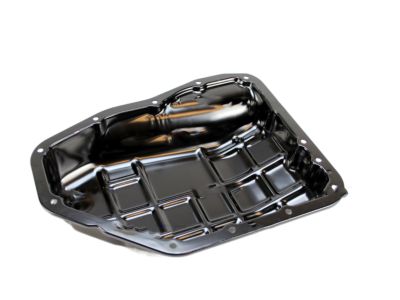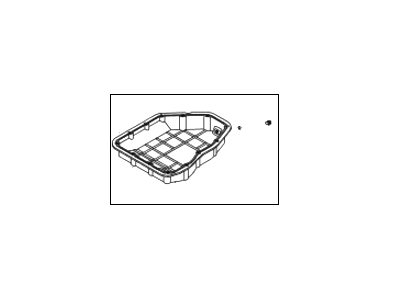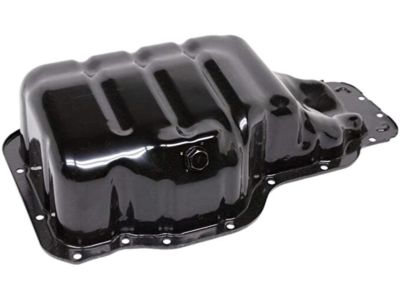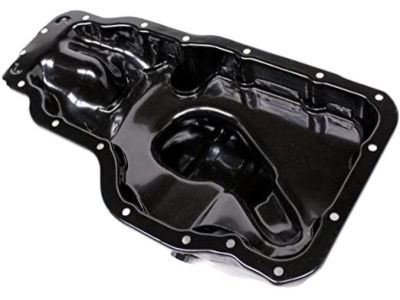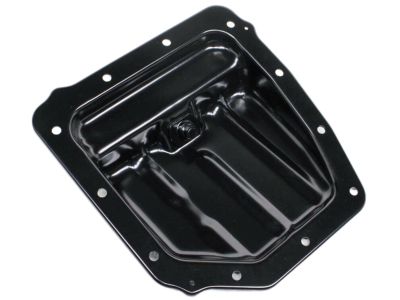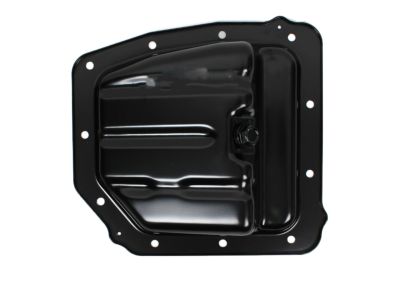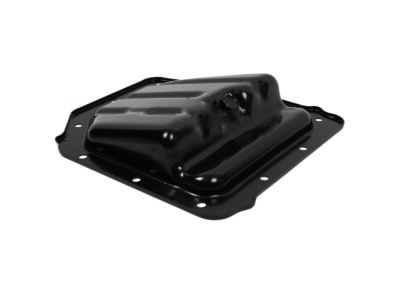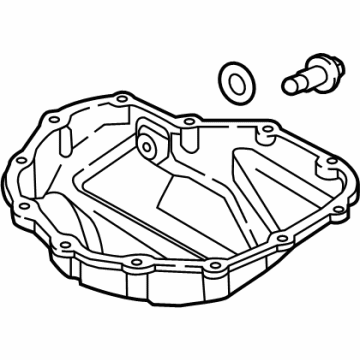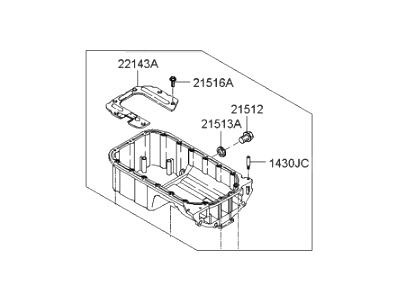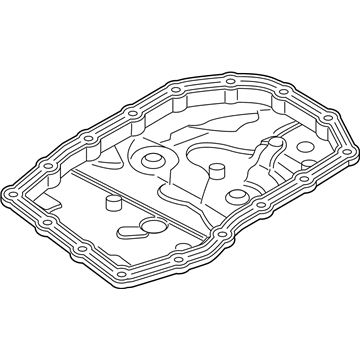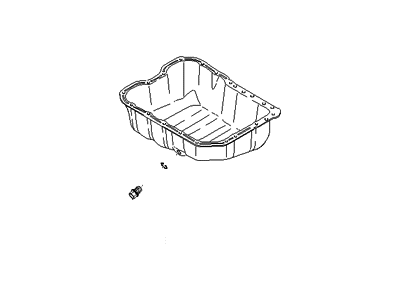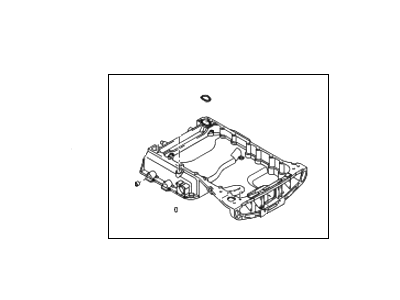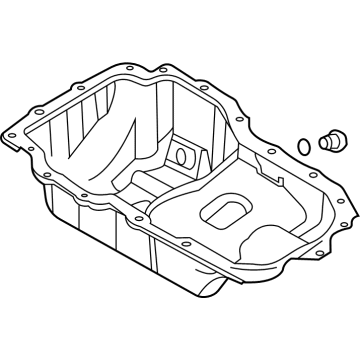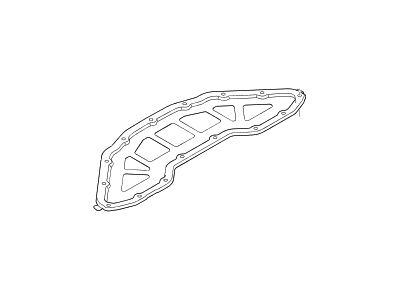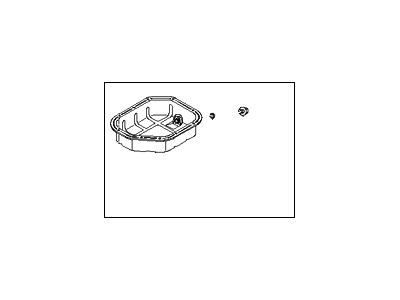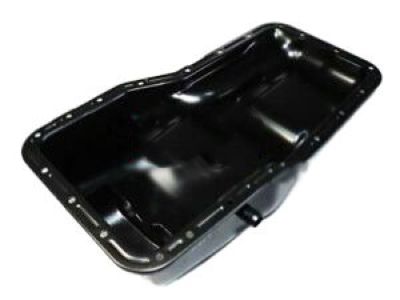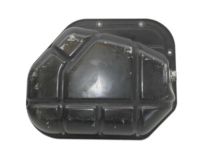×
- Hello
- Login or Register
- Quick Links
- Live Chat
- Track Order
- Parts Availability
- RMA
- Help Center
- Contact Us
- Shop for
- Hyundai Parts
- Hyundai Accessories


My Garage
My Account
Cart
Genuine Hyundai Oil Pan
Oil Drain Pan- Select Vehicle by Model
- Select Vehicle by VIN
Select Vehicle by Model
orMake
Model
Year
Select Vehicle by VIN
For the most accurate results, select vehicle by your VIN (Vehicle Identification Number).
140 Oil Pans found

Hyundai Pan Assembly-Engine Oil
Part Number: 21510-2G500$98.44 MSRP: $138.31You Save: $39.87 (29%)Ships in 1-2 Business DaysProduct Specifications- Other Name: Oil Pan

Hyundai Pan Assembly-Engine Oil
Part Number: 21510-2E023$89.97 MSRP: $126.40You Save: $36.43 (29%)Ships in 1-3 Business DaysProduct Specifications- Other Name: Oil Pan

Hyundai Pan Assembly-Engine Oil
Part Number: 21510-2B700$34.73 MSRP: $48.37You Save: $13.64 (29%)Ships in 1-3 Business DaysProduct Specifications- Other Name: Oil Pan

Hyundai Pan Assembly-Engine Oil
Part Number: 21510-2C000$75.97 MSRP: $106.74You Save: $30.77 (29%)Ships in 1-3 Business DaysProduct Specifications- Other Name: Oil Pan

Hyundai Pan Assembly-Engine Oil,Lower
Part Number: 21510-3C600$75.97 MSRP: $106.74You Save: $30.77 (29%)Ships in 1-3 Business DaysProduct Specifications- Other Name: Lower Oil Pan, Oil Pan
- Position: Lower

Hyundai Pan Assembly-Engine Oil,Lower
Part Number: 21510-3C201$72.17 MSRP: $101.40You Save: $29.23 (29%)Ships in 1-3 Business DaysProduct Specifications- Other Name: Lower Oil Pan, Oil Pan
- Position: Lower

Hyundai Pan Assembly-Engine Oil
Part Number: 21510-2E022$89.97 MSRP: $126.40You Save: $36.43 (29%)Ships in 1-3 Business DaysProduct Specifications- Other Name: Oil Pan

Hyundai Pan Assembly-Engine Oil
Part Number: 21510-2B020$36.36 MSRP: $50.65You Save: $14.29 (29%)Ships in 1-3 Business DaysProduct Specifications- Replaced by: 21510-2B040
Hyundai Pan Assembly-Engine Oil
Part Number: 21510-2M000$65.71 MSRP: $92.32You Save: $26.61 (29%)Ships in 1-3 Business DaysProduct Specifications- Other Name: Oil Pan
Hyundai Pan Assembly-Engine Oil
Part Number: 21510-03HA0$49.49 MSRP: $68.94You Save: $19.45 (29%)Ships in 1-3 Business DaysProduct Specifications- Other Name: Oil Pan
Hyundai Pan Assembly-Engine Oil
Part Number: 21520-23604$279.17 MSRP: $392.23You Save: $113.06 (29%)Ships in 1-2 Business DaysProduct Specifications- Other Name: Oil Pan, Upper Oil Pan
- Replaces: 21520-23602, 21520-23502, 21520-23601, 21520-23603
Hyundai Pan Assembly-Oil
Part Number: 48280-2H000$28.67 MSRP: $39.94You Save: $11.27 (29%)Ships in 1-3 Business DaysProduct Specifications- Other Name: Oil Pan, Transmission Pan
Hyundai Pan Assembly-Engine Oil
Part Number: 21510-2GPA0$84.07 MSRP: $118.11You Save: $34.04 (29%)Ships in 1-3 Business DaysProduct Specifications- Other Name: Oil Pan
Hyundai Pan Assembly-Engine Oil
Part Number: 21510-25053$69.27 MSRP: $97.32You Save: $28.05 (29%)Ships in 1-3 Business DaysProduct Specifications- Replaces: 21510-25051, 21510-25050
Hyundai Pan Assembly-Engine Oil,Upper
Part Number: 21520-3C153$139.72 MSRP: $196.31You Save: $56.59 (29%)Ships in 1-3 Business DaysProduct Specifications- Other Name: Oil Pan, Upper Oil Pan
- Position: Upper
Hyundai Pan Assembly-Engine Oil
Part Number: 21510-2M800$65.71 MSRP: $92.32You Save: $26.61 (29%)Ships in 1-3 Business DaysProduct Specifications- Other Name: Oil Pan
Hyundai Pan Assembly-Engine Oil
Part Number: 21510-2B040$36.36 MSRP: $50.65You Save: $14.29 (29%)Ships in 1-3 Business DaysProduct Specifications- Other Name: Oil Pan
- Replaces: 21510-2B020
Hyundai Pan-Oil,Lower
Part Number: 21511-3CJA0$34.20 MSRP: $47.63You Save: $13.43 (29%)Ships in 1-3 Business DaysProduct Specifications- Other Name: Lower Oil Pan, Oil Pan
- Position: Lower
Hyundai Pan Assembly-Engine Oil,Lower
Part Number: 21510-38050$49.26 MSRP: $68.61You Save: $19.35 (29%)Ships in 1-3 Business DaysProduct Specifications- Other Name: Oil Pan
- Position: Lower
 Product Specifications
Product Specifications- Other Name: Oil Pan
- Replaces: 21510-25000
| Page 1 of 7 |Next >
1-20 of 140 Results
About Hyundai Oil Pan
In the cooling system, the oil pan plays an important role. When your Hyundai is not running and the engine is resting, there are some oil flows down from the sides of the crankcase, and oil pans collects these oils. In other words, oil pan acts like an oil reservoir of the crankcase. The oil pan is usually made of thin steel and shaped into a deeper section. The location of the oil pan is where the oil pump is. However, after a longtime usage, the oil pan can be broken or leak, so check your oil pan in time for you and your family safety. If you find consistent oil leak in the same place under your Acura, or if you smell a smoke from engine compartment, then there is a possibility that your oil pan is in a risky condition. What you need to do next is getting a new oil pan and changing it by yourself, and you can save a lot of money in this way. What we can help you is we offer you all Hyundai genuine OEM oil pan with an attractive price.
Hyundai Oil Pan Parts Questions & Experts Answers
- Q: How can the upper and lower oil pans be removed and installed on 2012 and later Hyundai Accent?A:The upper oil pan on the other hand cannot be removed unless the engine is pulled out or removed from the car. This removal should be done after taking off the cable of the battery negative terminal and when the rear wheels are blocked and the front of the vehicle is hiked on two jackstands. Take off the engine splash shield if installed, expel the engine oil, and take out the oil filter and oil dipper. Subsequently, you should unscrew the pan bolts and then take off the oil pan, paying attention to the variation in the length of bolts used. In case the pan is seized to gasket land, use a small screwdriver or putty to pry it out without damaging the mating surfaces as this will lead to oil leakage. The lower oil pan can be separated from the upper oil pan while the other part is still fixed into the engine. In regard to the upper oil pan, the procedure involves the removal of the engine and next the lower oil pan. Take out the oil pick-up screen bolts/screws and the screen and finally the rear main oil seal. Remove the upper pan bolts; special attention paid to the variation of the bolt length; if you are having trouble, use pry bar with caution not to harm the surface that interconnects the two. When fitting the upper oil pan apply a scraper to remove the old sealant from the block and oil pan, clean the mating surfaces to ensure the threaded bolt holes in the upper pan is clean. Examine the shelf of the oil pan flange for unevenness and spread RTV sealer of 3/16-inch thickness on the sealing surface for the installation of the pan within 15 minutes. Put the oil pan onto the ladder assembly and screw in the bolts loosely and then use the star pattern to tighten the bolts to the required torque. The rest of the installation procedure can be done and it is the reverse of the removal procedures and after starting the engine, look at the oil pressure and possible leaks. Before installing the lower oil pan, the first step is the removal of all the old sealant, cleaning of the mating surfaces, application of RTV sealant and putting in the lower oil pan finally tightening the bolts in several processes to achieve the maximum torque set for it and testing of the engine for pressure of oil and leakage.
- Q: How to remove and insatall the oil pan on four cylinder Hyundai Sonata?A:To remove the oil pan, first take off the cable from the battery negative terminal. Demobilize the parking brake and lock the rear wheels, at this point lift the front end of the car and place it on TWO jackstands. If so, then get rid of the engine splash shield, dispose of the engine oil and also the oil filter, and, ultimately, the oil dipstick. Subsequently, eliminate any disturbing factors; The oil pan is made up of an upper cast aluminum portion and lower stamped steel portion, which are separable. Loosen the lower oil pan with pry bar carefully to prevent the damage of the mating surfaces of the pan and the block. After that, unbolt and separate the upper oil pan by carefully pulling it apart and noting that the bolts come in different sizes and if it is jammed then rock it slightly to come off. As for the installation, it is important to eliminate the previous sealant and clean the block and the oil pan with a scraper Then you have to cover the mating surfaces with the help of lacquer thinner or acetone. Threads made on the block must be free of any dirt and the oil pan flange examined for warping, filing, and deburring the matching surfaces if required. Place an RTV sealant on the lower mating surface of the oil pan, in 3/16 inch width, and fit the former within 15 minutes of application; fix the upper oil pan on the engine block without tightening the bolts properly. Torque the oil pan-to-engine block bolts from the center of the circle toward the outside to the same torque spec and then continue , tightening the lower oil pan bolts in several passes until it reaches the same torque spec. Last, start the engine inspect for the oil pressure when the engine is on, and further inspect for any signs of oil leaks.
- Q: How to remove and insatall the oil pan on V6 Hyundai Santa Fe?A:To dismantle the oil pan simple follow the steps below; first unclasp the cable from the negative terminal of the vehicle battery then lift the vehicle on standard jack and place the jackstands securely. Undo the clips and screws of the engine splash shields if they are installed, empty the engine oil and also detach the oil filter. The oil pan is formed of an aluminum casted part bolted to the block and transaxle and a lower stamped-steel pan part. Remove the exhaust pipe connecting both exhaust manifolds and, if required, the oxygen sensors; this should be done with the assistance of the pipe's weight-bearing capacity. Loosen the pipe on the rear part and take out the hangers connecting the pipe to the automobile. For 3.5L engines before 2007, unscrew the two lower bolts that fasten the upper aluminum oil pan section to the transaxle. Take out all those components that may hinder, and make sure there is ample space for the oil pan to be taken out. The lower steel pan can be detached by unbolting it and if Show more stuck use a pipe wrench to remove the bolt gently without destroying the mating surfaces of the pan. If your lower baffle is fitted then it must be unscrewed and if fitted with the oil pump pick-up/strainer then it has to be removed as well. Third, loosen the remaining flat head hose clamps and thread in the new /metric bolts the head hoses to the block with care as some of the bolts are behind the steel pan. Regarding installation, one needs to remove the previous sealant mechanically using a scraper on the block and oil pan, and wash the contact surfaces with acetone or lacquer thinner. Make sure the threaded bolt holes in the block are clear; examine the flange of the steel pan section for deformation, which needs to be flattened if it has sprung back. Replace the baffle if it had been taken out beforehand; also, clean the sealing areas of the engine block and mated aluminum pan section, apply a 3/16-inch wide band of RTV sealant to the aluminum pan section. Within 5 minutes, fit the aluminum pan section by using the same torque on the bolts in several sequences. Check the oil pump pick-up/strainer assembly for cracks & blockage, and clean it if it was removed & refit a new gasket and fasten the bolts to the provided torque. 5 Bring the flange of the steel oil pan section to touch the cast flange while making sure that is installed within 5 minutes of applying RTV sealant to the flange in a 3/16-inch wide bead. Stand the steel pan on the metal part of the aluminum and fasten the bolts, in a way that is step wise, this may take three or four steps. The remaining part of the installation is done in the reverse order of the removal and it is recommended that after the sealant has been put in place, one waits for at least two hours before refilling the oil and installing an oil filter. Lastly, start the engine and ensure for pressure and leaks of the oil.
Related Hyundai Parts
Browse by Model
Accent Oil Pan Azera Oil Pan Elantra GT Oil Pan Elantra N Oil Pan Elantra Oil Pan Elantra Touring Oil Pan Entourage Oil Pan Equus Oil Pan Excel Oil Pan Genesis Coupe Oil Pan Genesis G70 Oil Pan Genesis G80 Oil Pan Genesis G90 Oil Pan Genesis GV70 Oil Pan Genesis GV80 Oil Pan Genesis Oil Pan Ioniq Oil Pan Kona N Oil Pan Kona Oil Pan Palisade Oil Pan Santa Cruz Oil Pan Santa Fe Hybrid Oil Pan Santa Fe Oil Pan Santa Fe Sport Oil Pan Santa Fe XL Oil Pan Scoupe Oil Pan Sonata Hybrid Oil Pan Sonata Oil Pan Tiburon Oil Pan Tucson Oil Pan Veloster N Oil Pan Veloster Oil Pan Venue Oil Pan Veracruz Oil Pan XG300 Oil Pan XG350 Oil Pan
